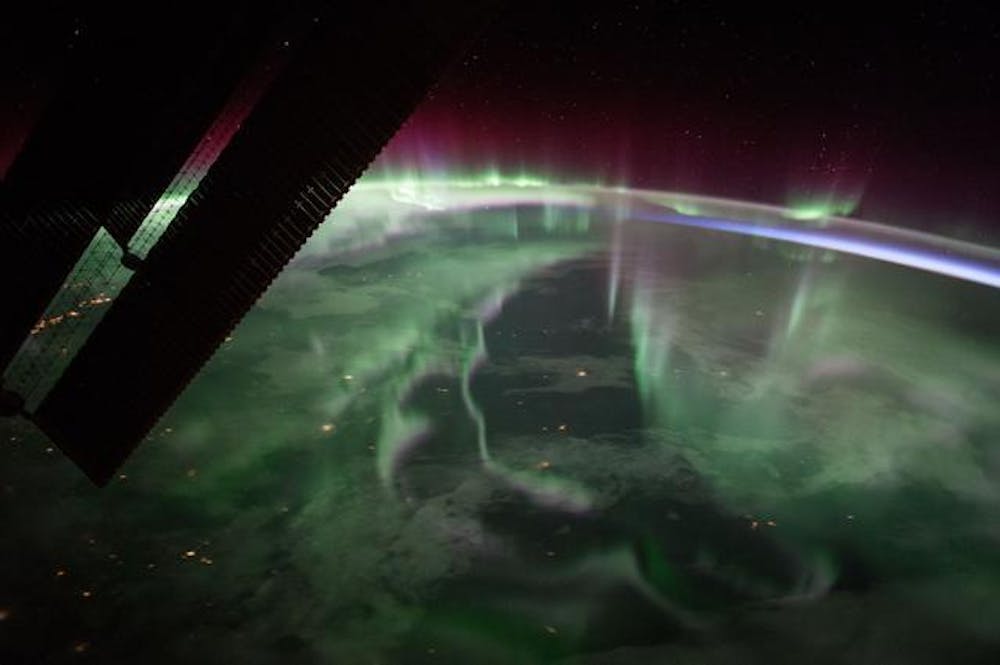People in Bloomington and across Indiana may be able to see the northern lights, or the aurora borealis, starting around 11 p.m. Friday into early Saturday morning — if cloud cover cooperates.
While the highest chances of seeing the aurora are around northern Europe, Canada and the northern U.S., the National Oceanic and Atmospheric Administration expects lights could be visible as far south as Alabama.
Bloomington will have about a 40% chance of viewing the aurora — mostly based around potential cloud cover, Chris Stubenrauch, a space weather research scientist working at NASA’s Goddard Space Flight Center, estimated over direct message on X.
“I think if the clouds hold up, you have a great chance at seeing it since the space weather itself will be favorable,” he said.
The lights could appear toward the north in the sky because of massive activity on the sun Thursday — at least seven immense explosions of plasma interlaid with powerful magnetic field lines, called coronal mass ejections.
Large coronal mass ejections begin when magnetic fields in the sun’s lower atmosphere become stressed and realign into a relaxed position. This realignment can cause a sudden release of energy — coronal mass ejections.
These coronal mass ejections in turn cause geomagnetic storms on and around Earth. Thursday’s solar activity caused the first G4 (severe) geomagnetic storm warning since 2005.
The NOAA expects more activity from a region on the sun now patterned with a sunspot 16 times the diameter of Earth. This area is observable Friday with the naked eye by looking at the sun through solar eclipse glasses.
However, cloud coverage over and around Bloomington on Friday night could cause issues with visibility, Ethan Steward, the copresident of the American Meteorological Society’s IU student chapter, said over email.
About 50% of Bloomington’s sky is expected to be covered by clouds at 11 p.m., Steward said, with these conditions persisting throughout the potential viewing period.
Clouds in the sky may be both high and low in the atmosphere. Steward said a layer of high clouds about 5 miles up in the sky — generally more transparent than low-level clouds — is expected to be present over Bloomington.
There may also be low clouds about 1.5 miles up in the sky during potential viewing, though forecasters’ confidence in those clouds is comparatively lower, Steward said.
Either way, cloud cover will make viewing the aurora more difficult, potentially dimming the lights or completely obscuring them. He said clouds higher in the atmosphere will be easier to peer through, and viewing the aurora could require luck in breaks between lower-level clouds.




